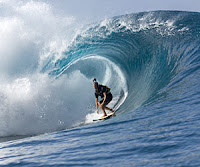
On February 22, 2008, AdWeek featured an article titled "Red Bull Hangs 10 with Surfers" by contributing writerShahnaz Mahmud. The article discussed how energy drink maker Red Bull launched a new web site dedicated to surfing. Redbullsurfing.com has incorporated video technology (by Immersive Media) give viewers and "web-surfers" the feeling that they are a part of the action. "The technology uses a special camera that captures 11 separate video streams, which are arranged according to geodesic geometry to create a spherical image intended to provide a 360-degree view."
Apparently, this new initiative came about after TAOW Productions, charged in a marketing brief by Red Bull, sampled the Immersive Media technology off the Florida Keys in a gunboat simulation. Butch Bannon, director of special projects and business development at global marketing agency TAOW described how that is when it hit them-- "Our mission is to connect brands with their core consumers in ways that really impact and affect them in a multi-sensory fashion."
They went to increase traffic to the site by offering the target customer an experience they crave, compelling footage that will make them want to return to the site, and support the brand that brought this about--Red Bull!
EvenB. Scott Taylor, founder and president of TAOW, stated that"Red Bull is at the forefront of experiential marketing techniques that will have a profound impact on the industry."
We all know of the "Red Bull will Give you Wings" campaign, one that has stuck in our minds, that most can spot from a mile away. However, this is a new technique, a new campaign, with a new innovative idea.
Experimental marketing, much like nontraditional is almost crucial to any campaign now. Brands are more than over competing for thier consumers attention and retention- and the smartest way to win thier hearts is to give and show the what they want.